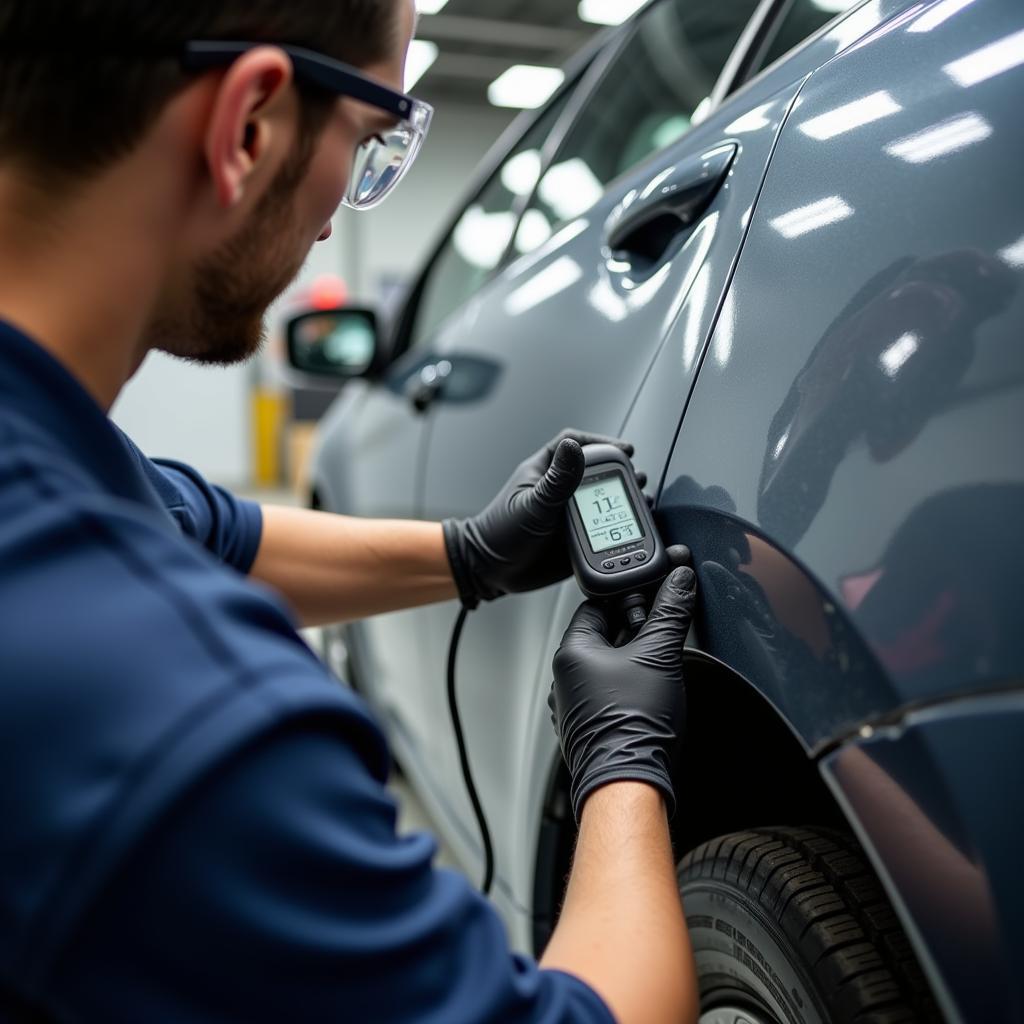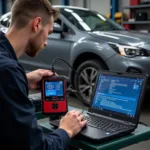Car body repair before and after results can be dramatic. Understanding the process, from the initial damage assessment to the final polish, empowers you to make informed decisions and ensure a quality repair. This guide will cover everything you need to know about car body repair, from minor dents to major collision damage.
Understanding the Car Body Repair Process
The car body repair process is more than just making your car look good again; it’s about restoring its structural integrity and safety. A proper repair involves multiple stages, each requiring specialized skills and tools.
Damage Assessment: The First Crucial Step
The first step in any car body repair is a thorough damage assessment. This involves identifying all the damaged areas, including those that might not be immediately visible. A skilled technician will examine the car’s frame, panels, and internal components to determine the extent of the damage. This assessment forms the basis for the entire repair plan.
Repairing the Damage: From Dents to Frame Straightening
Once the damage is assessed, the repair process begins. This can involve a variety of techniques, depending on the severity of the damage:
- Dent Repair: Minor dents can often be repaired using Paintless Dent Removal (PDR), a technique that involves massaging the metal back into its original shape without affecting the paint.
- Body Filler: For deeper dents and scratches, body filler is used to fill in the damaged areas and create a smooth surface.
- Panel Replacement: In cases of severe damage, entire panels might need to be replaced. This requires precision cutting and welding to ensure a seamless fit.
- Frame Straightening: If the car’s frame is damaged, it needs to be straightened using specialized equipment. This is crucial for restoring the car’s structural integrity and safety.
Painting and Finishing: Restoring the Original Look
After the repairs are complete, the car is prepared for painting. This involves sanding the repaired areas, applying primer, and then painting the car to match its original color. A clear coat is applied for protection and shine. Finally, the car is polished to a flawless finish.
The Importance of Before and After Photos
Before and after photos are invaluable in car body repair. They document the extent of the damage and showcase the quality of the repair work. For the customer, these photos provide tangible proof of the transformation. For the repair shop, they serve as a record of their work and can be used for marketing purposes.
What to Look for in Before and After Photos
When evaluating before and after photos, look for:
- Clear and Detailed Images: The photos should clearly show the damaged areas before the repair and the finished result after the repair.
- Consistent Lighting and Angles: This allows for a fair comparison between the before and after states.
- Focus on the Repaired Areas: The photos should highlight the specific areas that were repaired.
Choosing the Right Car Body Repair Shop
Choosing the right car body repair shop is crucial for a quality repair. Look for a shop with experienced technicians, modern equipment, and a strong reputation. Ask for references and check online reviews. Don’t hesitate to ask questions about their repair process and guarantees.
Conclusion
Car body repair before and after results demonstrate the skill and expertise of a good repair shop. Understanding the process and knowing what to look for ensures a successful repair that restores your car to its former glory.
FAQ
- How long does car body repair take? The time required depends on the extent of the damage, ranging from a few hours for minor dents to several weeks for major collision repairs.
- What is the average cost of car body repair? The cost varies depending on the type and extent of the damage, as well as the labor rates in your area.
- Does car body repair affect the resale value of my car? A poorly executed repair can negatively impact resale value, while a professional repair can help maintain it.
- How can I find a reputable car body repair shop? Look for certifications, online reviews, and ask for recommendations from friends and family.
- What is the difference between PDR and traditional dent repair? PDR is a paintless method for minor dents, while traditional repair involves filling and repainting.
- Should I contact my insurance company before getting my car repaired? Yes, it’s essential to contact your insurance company to file a claim and understand your coverage.
- What should I do if I’m not satisfied with the repair work? Communicate your concerns with the repair shop and seek a resolution.
Need help with car body repair? Contact us via WhatsApp: +1(641)206-8880 or Email: [email protected]. Our 24/7 customer support team is ready to assist you.


